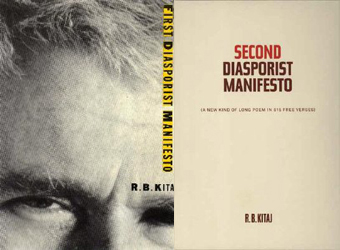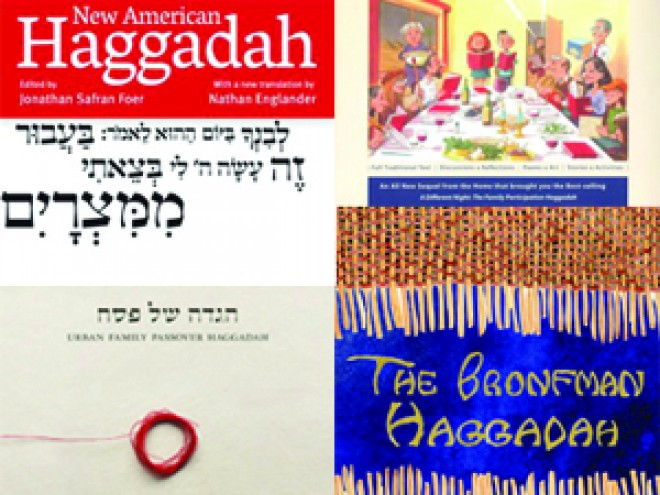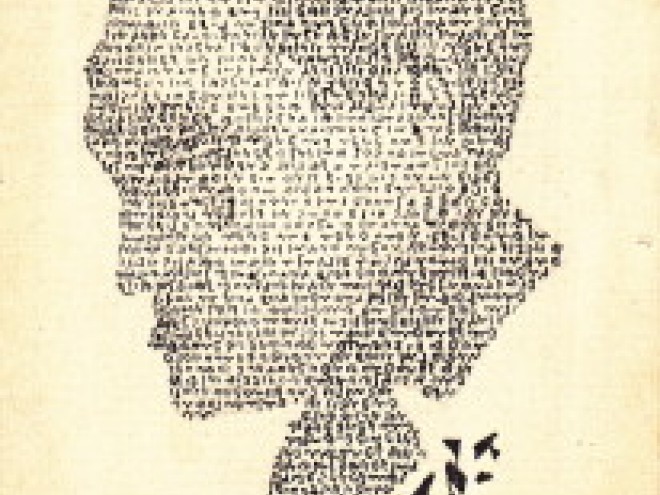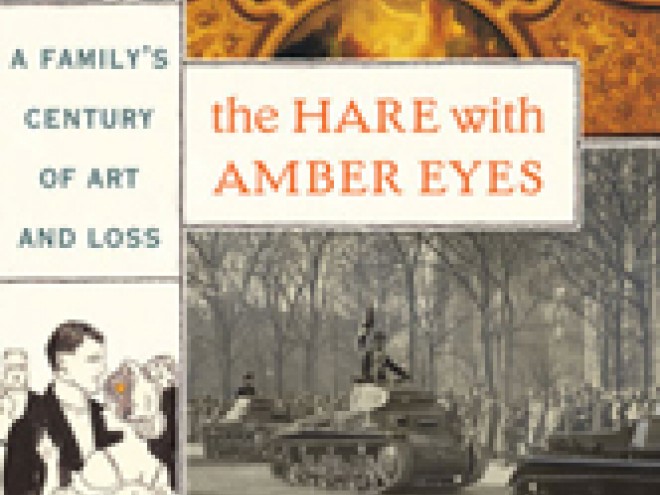The Jewish Museum has opened a new exhibit titled R. B. Kitaj: Personal Library featuring the work of R. B. Kitaj, famed Jewish American artist and poet (1932 – 2007). The exhibit, which opened April 5th and will be on view until August 11th, features 33 screenprints that are exact reproductions of select book covers from Kitaj’s own personal library. The collection, titled In Our Time, dates from 1969 and, stylistically, draws upon the influences of the Pop and Readymade artistic movements.
Kitaj, a lover of books with eclectic tastes, was himself a poet and author as well as an artist. In 1989 he published the First Diasporist Manifesto, a short book that combines prose, poetry and art to describe how the Jewish diaspora has affected his outlook on art and himself as an artist. Kitaj later followed up the first manifesto with the Second Diasporist Manifesto in 2007, the same year that he committed suicide at the age of 74. Kitaj’s brilliant melding of styles — Pop and Readymade — in his featured art collection was a trend that followed the artist throughout most of his career and is evidently mirrored in the hybridization of rhetoric styles in his literary work. The artist’s tendency to stylistically hybridize both his artistic and literary work is also a reflection of his identity as self-described “diasporist” Jew.
The gallery at The Jewish Museum is an intriguing exhibition and is certainly representational of all the cultural bounty that can come out of being a diasporist. The collection serves not only as a tribute to his beloved library, but also as a reproduction of Kitaj’s personal mementos from his various journeys — both cultural and physical — into different places, schools of thought and  philosophies. The screenprints of book covers come from a wide of array of genres and Kitaj’s love of poetry can be seen in his inclusion of one book of Vachel Lindsay’s poetry and in his a reproduction of a cover of one of the volumes of transition, a literary journal that once featured greats such as William Carlos Williams and James Joyce. Some oddities have also been included, such as a cover of an annual budget report for the city of Burbank, year 1968 — 1969, a military intelligence bulletin from 1944, and a medical and public health technical manual. The artist’s interest in Holocaust studies can also be seen in one cover that bears the title, “The Jewish Question” and belonged to a collection of anti-semitic articles published by Henry Ford’s newspaper, The Dearborn Independent, during prewar America, and in another titled We Have Not Forgotten.
philosophies. The screenprints of book covers come from a wide of array of genres and Kitaj’s love of poetry can be seen in his inclusion of one book of Vachel Lindsay’s poetry and in his a reproduction of a cover of one of the volumes of transition, a literary journal that once featured greats such as William Carlos Williams and James Joyce. Some oddities have also been included, such as a cover of an annual budget report for the city of Burbank, year 1968 — 1969, a military intelligence bulletin from 1944, and a medical and public health technical manual. The artist’s interest in Holocaust studies can also be seen in one cover that bears the title, “The Jewish Question” and belonged to a collection of anti-semitic articles published by Henry Ford’s newspaper, The Dearborn Independent, during prewar America, and in another titled We Have Not Forgotten.
As a whole this collection is not overtly Jewish. But there’s a level subtext that suggests a celebration of the artist as both a Jew and cultural observer. There’s the suggestion that it was, in fact, Kitaj’s feelings of Jewish diaspora, of not-belonging to any particular nation and not being attached to any one school or culture, that allowed him to pick his way through different movements, adopt different traditions and assimilate them into his own unique Jewish identity.
Jackie Anzaroot is a graduate of Brooklyn College with degrees in English and Linguistics. She has held internships at Simon & Schuster and is currently interning at the Jewish Book Council.


